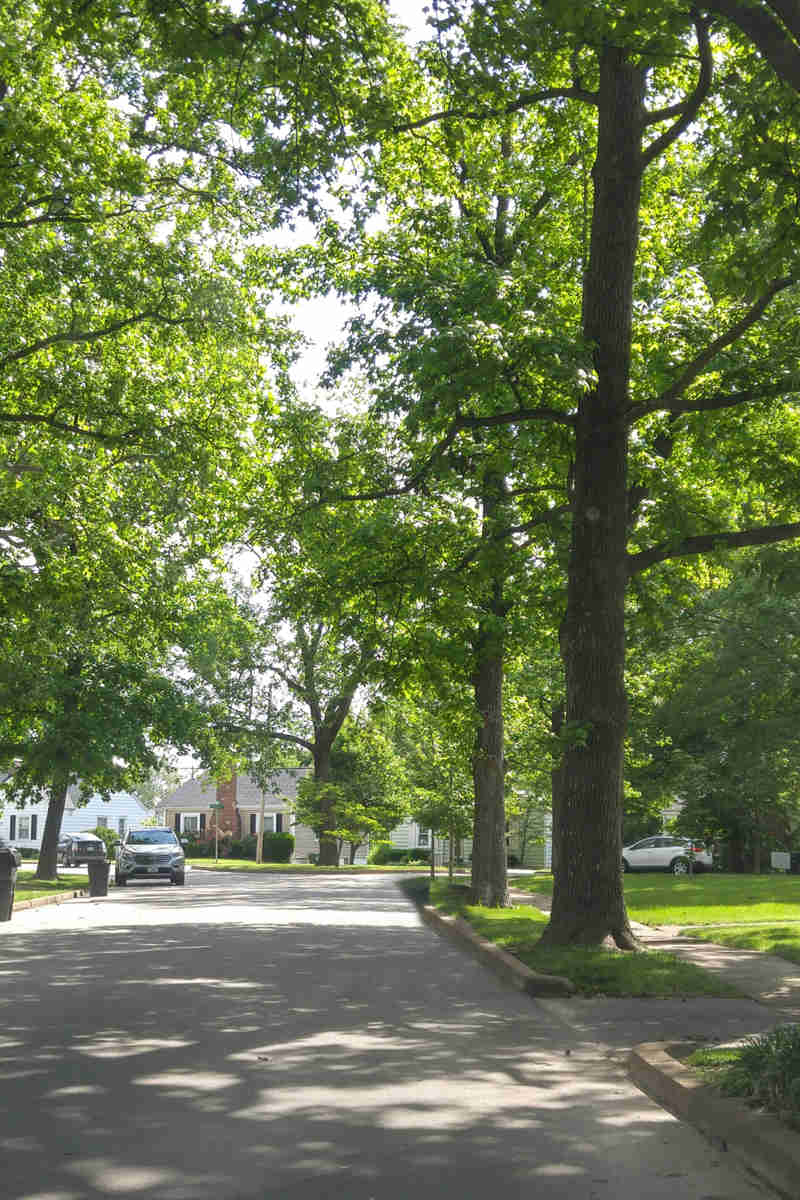October in New England often brings cool mornings and rain, but that doesn’t mean your trees are properly hydrated.
Despite looking dormant above ground, trees are still active below ground until the soil freezes. Fall tree watering is essential to prepare tree roots for winter.
Why Watering in October Is So Important in Massachusetts
Late fall tree care in Massachusetts should include watering, both for post-summer recovery and winter prep.
Trees may still be recovering from summer drought or heat stress late into the summer, especially in Eastern Massachusetts, where drought conditions and historically high temperatures occurred. Soil moisture can help restore root function after hot summers and promote leaf bud development for spring.
In the early winter, properly watered trees are less likely to suffer damage. Waterlogged soil is at risk of freezing and damaging the plant. Dry soil leads to desiccation of the foliage.
October is the prime time for root development, especially in young or newly transplanted trees. Since soil cools more slowly than the air, soil temperatures may differ from air temperatures. Roots continue to grow until soil temperatures drop below 40 degrees Fahrenheit, which means watering trees in October is highly recommended if the weather permits.
Which Trees in New England Benefit Most from Fall Watering
While all trees benefit from a final watering before winter, there are a few types that especially feel the advantages of fall tree watering.
Trees planted within 1 to 2 years get an extra boost of hydration to their roots, making them stronger for the oncoming winter.
Evergreens, like spruce, hemlock, arborvitae, and boxwoods, are at risk of winter dessication, which can be avoided by a final watering.
Shallow-rooted trees, such as birch, maples, and dogwoods, require watering in the fall to promote root growth and protect them from winter weather.
Fall drought stress in New England can be harmful. Trees showing signs of leaf scorch, early drop, or thinning canopy need watering before winter’s freeze to ensure they stay hydrated in the long term.
How to Water Trees in Autumn
Late fall tree care in Massachusetts doesn’t have to be complicated. Here are a few tips that can help ensure your trees are well-watered before winter.
- Deep Watering is Key – Use a soaker hose, or the slow-drip method to water deeply one or twice a week. Generally, 10 to 15 gallons of water per inch of trunk diameter are recommended. Sandy soils may require more water since they retain less and drain more quickly.
- Best Time of Day – The morning is generally the best time of day for watering to minimize water loss. Avoid watering before a hard overnight frost to mitigate root damage.
- Monitor Rainfall – The goal for proper tree watering through rainfall is one inch per week, or 2 inches for sandy soils, but many regions in Massachusetts fall short during October.
- When to Stop – Knowing when to stop watering trees in the fall is imperative to avoid root damage. The general rule of thumb is to continue watering until the ground begins to freeze, typically in mid-to-late November in most of Massachusetts.
Common Watering Mistakes to Avoid in Fall
Watering trees in the fall in Massachusetts is generally a simple task, but it’s easy to make mistakes that can damage your trees. Here are common watering mistakes to avoid:
- Light surface watering – Using a hose, sprinkler, or most lawn irrigation systems to water the surface doesn’t allow water to reach the roots, an important part of tree hydration.
- Assuming Rain is Enough – While rain is helpful for watering, even storms don’t often provide the deep moisture trees need to survive winter since the short, heavy rains that are becoming the norm in Massachusetts tend to run off rather than seep into the soil.
- Watering Too Close to Trunk – Roots absorb the most moisture throughout the dripline.
- Overwatering – Watering too much, especially in poorly draining soils, can cause root rot and other issues. Consult your local arborist to find out what your tree species needs.
How to Check Soil Moisture Before You Water
The key to knowing when to stop watering trees in New England is to check your soil moisture before watering. This also helps avoid over- or underwatering your trees, getting the moisture levels just right.
Use a screwdriver or trowel to probe 6 to 8 inches deep into the soil. If it’s dry or dusty, it’s time to water your tree. If it’s cool and moist, you can wait a few days before watering again.
The University of Nebraska – Lincoln’s online Drought Monitor is a great resource to check moisture levels.
When to Call a Professional Arborist
Certified arborists possess the knowledge and expertise necessary to assess whether your tree is adequately prepared for winter. Young trees, large evergreens, or valuable ornamentals are especially vulnerable to changing seasons. If your trees have visible drought damage or if you’re unsure about the soil conditions in your backyard, contact your local arborist to help!
Need help preparing for winter? At Hartney Greymont, we have local turf specialists in Needham, Danvers, Cape Cod, and Concord to provide advice for winterizing your yard.



